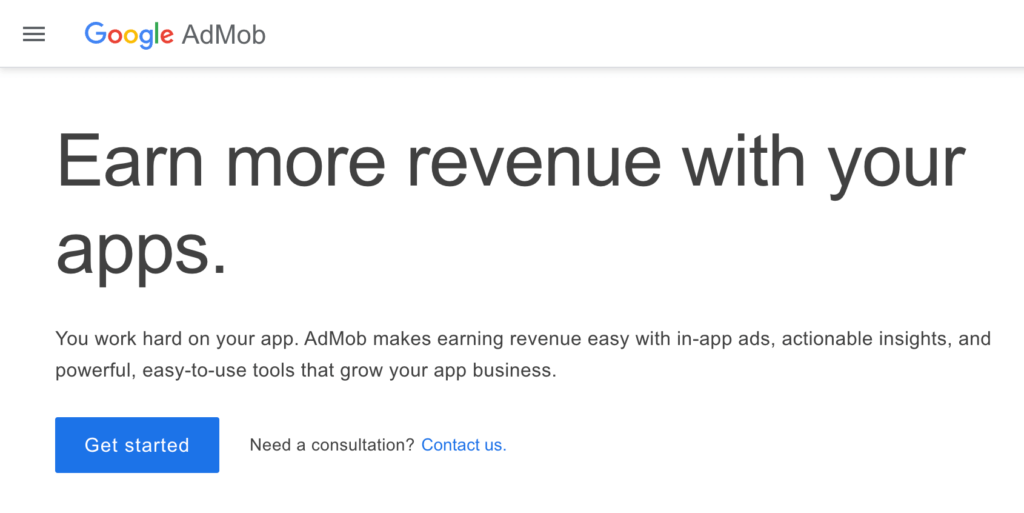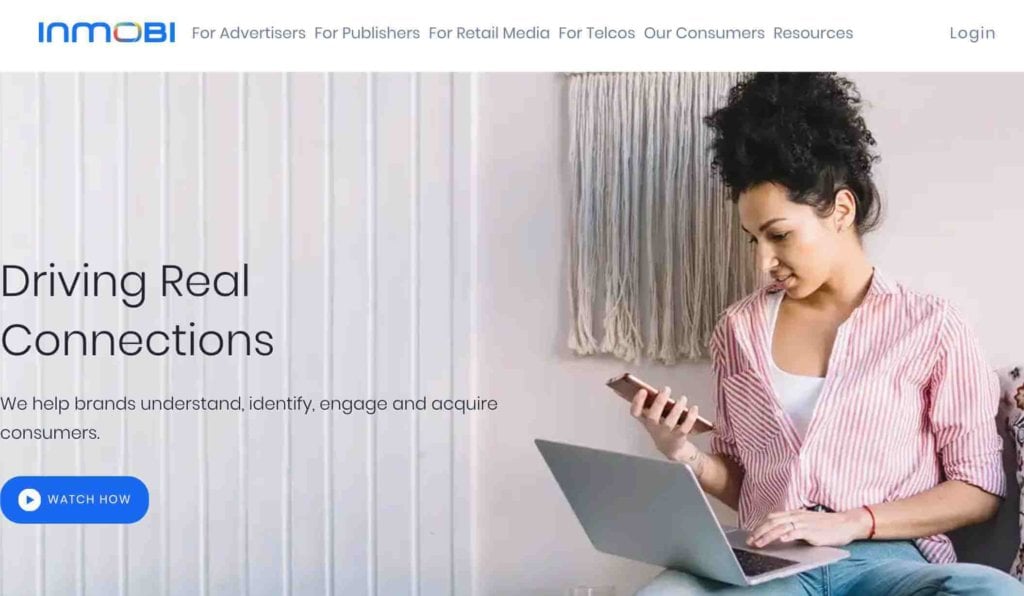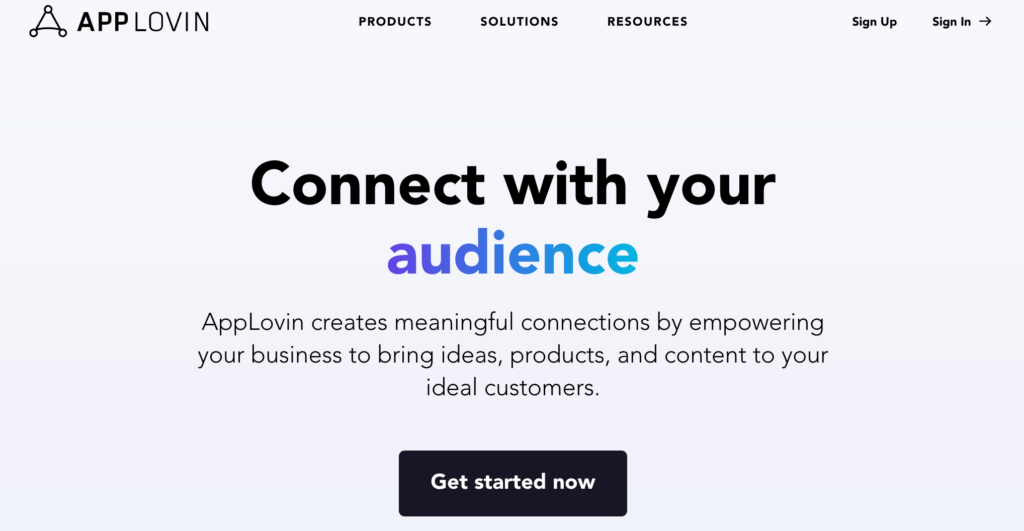What is Ad Mediation?
Ad mediation helps publishers and app developers transform every ad slot into an efficient revenue source, managing the distribution of ads from various networks within single placements on apps or websites. It streamlines the process of managing multiple ad networks with just one SDK.
This technology automates the selection of ad networks and optimizes for the highest fill rates and eCPMs. Thus, it boosts publishers’ earnings and alleviates the manual work, allowing publishers to focus on crafting content and nurturing their audience.
This article explains what ad mediation is, how it works, its benefits and which ad mediation platforms stand out in helping publishers reach their monetization goals.
What is Ad Mediation?
Ad mediation is a technology that enables publishers to offer their ad inventory to multiple ad networks. It enables publishers and app developers to operate with multiple ad networks through a single SDK. The main goal is to maximize ad monetization by increasing eCPM, ad fill rates, and general efficiency.
Ad Mediation Platforms: An Overview
Ad mediation platforms help to maximize publishers’ ad monetization by increasing their ad fill rates and eCPM rates. These platforms optimize searches for the top-performing ad networks, eliminating the need for publishers to do so manually.
They analyze various factors, including CPM/eCPM, fill rates, ad formats, and user demographics, using algorithms to determine which network will yield the highest revenue for a specific impression.
Ad mediation platforms typically use a formula that helps to optimize the fill rate, eCPM, or both:
- Ad revenue = ad requests * fill rate * eCPM
The ad mediation platforms select the advertiser that will generate the highest ROI. Publishers can rank multiple ad networks in their preferred order. Therefore, if an ad network can’t fill the request, the ad mediation platform moves to the next one until the request is filled.
How Ad Mediation Works?
Ad mediation technology searches ad networks for the best inventory for publishers and subsequently sends ad requests to increase fill rates.
Here are the 4 main steps that show how this process works:
- Publishers integrate the ad mediation platform’s SDK into their app, enabling it to gather audience insights.
- When the app is used, the SDK requests an ad from the mediation platform.
- The platform then picks the best ad from its network pool based on revenue potential.
- The chosen ad is displayed, generating revenue for the publisher.
Benefits of Ad Mediation
Maximizing revenue
For publishers, particularly app developers, optimizing fill rates and eCPMs is essential for maximizing ad revenue. Fill rate, which measures the percentage of ad requests that are successfully filled with ads, indicates how well your ad inventory is used.
- A higher fill rate shows that a larger portion of your ad space generates revenue.
However, relying on a single ad network or just a few can limit your fill rate due to limited demand. In this case, you may have unused ad inventory and lost revenue opportunities.
This is where ad mediation platforms come to help. Ad mediation gives access to a wider array of ad networks. It increases the chance that every ad request will find a matching advertiser, thus improving fill rates.
When one network cannot fill an ad request, the platform automatically redirects the request to another network, continuing this process until the ad slot is filled. This boosts your fill rate and ensures that your inventory is consistently sold.
Moreover, ad mediation platforms optimize eCPMs by selecting the ad network offering the highest bid for each impression.
Simplified SDK integration
The technical benefits of ad mediation cannot be overstated. Without it, publishers must integrate and regularly update multiple SDKs–one for each ad network, which is tiring and prone to errors.
Ad mediation platforms require just one SDK integration. This saves time, reduces complexity, and minimizes the risk of technical issues that can arise from managing multiple SDKs. Integration with an ad mediation platform is typically quick and straightforward, offering an easy approach to accessing a diverse range of ad networks.
Multiple ad networks
For publishers working with multiple ad networks, managing each separately can quickly become overwhelming.
Manually overseeing 10 or even more networks is time-consuming and often results in suboptimal ad revenue due to the difficulty of tracking and optimizing each network’s performance.
Ad mediation consolidates control of all ad networks into a single, centralized platform. This unified management system dramatically simplifies app monetization and offers publishers a holistic view of their ad operations.
With ad mediation platforms, publishers gain access to comprehensive insights, including critical metrics and detailed performance reports across all networks.
Types of Ad Mediation
Waterfall vs. header bidding
Waterfall and header bidding represent two fundamentally different strategies for managing and monetizing ad inventory through ad mediation.
- In the waterfall model, ad networks are arranged in a hierarchical sequence based on historical performance metrics such as eCPM rates. When an ad request is made, the system sequentially queries these networks in order of priority.
- Header bidding addresses many of the waterfall model’s limitations by allowing all participating ad networks to bid on the inventory in real-time. Header bidding treats all demand sources equally, giving each the chance to win the ad impression.
| Waterfall | Header bidding | |
| Description | A sequential model prioritizing ad networks based on performance, filling ad slots in order. | Allows simultaneous real-time bids from all networks, increasing competition and eCPMs. |
| Benefits | Simple to implement; predictable based on history. | Boosts ad revenue through competition; sells to the highest bidder. |
| Drawbacks | Lower revenue if top networks can’t fill or lower-ranked networks offer higher eCPM. | Technically complex; requires more management resources. |
| Who is it for? | Publishers seeking simplicity and clear ad network hierarchy. | Publishers aiming to maximize revenue and capable of handling complexity. |
The decision between waterfall and header bidding depends on a publisher’s specific requirements, including their technical resources, revenue goals, and their ad inventory.
In-app vs. web-based ad mediation
Both approaches aim to maximize ad revenue and improve ad relevance but each is tailored to specific use cases.
- In-app ad mediation is used within mobile apps to connect with multiple ad networks through a single platform or SDK. This method allows app developers to manage and optimize their ad inventory, serving users with the most relevant and highest-yielding ads from various sources, without integrating each ad network’s SDK individually.
- Web-based ad mediation, in contrast, operates on websites accessed through web browsers. This method doesn’t require an SDK but instead relies on web technologies and services that work within the browser environment.
| In-app ad mediation | Web-based ad mediation | |
| Description | Tailored for mobile apps, managing multiple ad networks to optimize in-app revenue. | Focuses on websites, maximizing ad revenue through browser-based traffic. |
| Benefits | Customized for mobile experiences, access to mobile-specific networks and formats. | Broad reach across devices, utilizes a mix of ad networks for diverse traffic. |
| Drawbacks | Complexity in SDK integration, platform-specific strategies. | Potential challenges with ad blockers, less personalized than in-app. |
| Who is it for? | Publishers with mobile apps aiming to maximize in-app ad placements and revenue. | Publishers with a strong web presence looking to monetize diverse web traffic efficiently. |
Programmatic ad mediation
Programmatic ad mediation involves technology that automatically sells and purchases ad inventory in real-time. It’s a more advanced form of ad mediation that uses real-time bidding and machine learning algorithms.
Programmatic mediation technologies evaluate individual ad impressions in real-time, ensuring that the published ad space can produce more revenue. It helps app publishers to optimize their revenue by automatically selecting the most profitable ad networks.
Choosing the Right Ad Mediation Platform: What To Consider?
The choice of ad mediation platform is crucial. Not all platforms operate with the same level of objectivity. Some might prioritize their own networks, potentially skewing the ad selection process and impacting revenue.
Therefore, selecting an ad mediation platform requires careful consideration. Publishers should look for platforms that offer both the automation benefits of mediation and the flexibility to shape their monetization strategy through manual controls and preferences.
Here are 5 key features you, as a publisher, should consider:
1. Cross-platform support
Look for a platform that supports various operating systems and devices. The broader the compatibility, the higher the chance that your ads reach a wider audience and increase your potential revenue.
2. Pricing model
Check the platform’s pricing structure and select one that fits your financial strategy. Some platforms may charge a flat fee, while others take a cut from your ad earnings.
3. User reviews
Take the time to read reviews from other developers and publishers who have used the platform. Their experiences can provide valuable insights into the platform’s performance, reliability, and user satisfaction, which can save you from encountering a bad experience and losses.
4. Level of support
Support is one of the most important factors, especially if you’re a beginner and lack technical knowledge. Once you’ve found an ad mediation platform, review their help desk or support channels to tell the quality of support they offer.
A responsive and acquainted support team is crucial for addressing any issues and ensuring minimal disruption to your ad operations.
5. Platform features
Examine each platform’s range of features. Some of the most essential features to look for include:
- Ad optimization tools that automatically adjust and optimize ads based on performance metrics, user behavior, and ad revenue potential. For publishers, this guarantees that their ad inventory is used in the most efficient way without constant manual adjustments.
- Automated reporting which provides timely and accurate data on ad performance, revenue, and user engagement. This feature streamlines the analysis process, allowing publishers to identify trends quickly, saving time and reducing the possibility of errors.
- RTB capability which allows publishers to sell ad inventory in real-time auctions, ensuring that each ad slot is sold at the highest possible price. This maximizes ad revenue by allowing multiple advertisers to compete for each impression, increasing the price.
Common Pitfalls and How to Avoid Them?
Lack of control
One concern is the potential loss of direct control over which ads are displayed. Suboptimal ad selections could decrease revenue if the ad mediation platform doesn’t perfectly align with the publisher’s standards or revenue optimization strategies.
How to avoid this?
- Implement custom waterfalls. Use the customization features of your ad mediation platform to prioritize ad networks that align with your revenue goals and quality standards.
- Use direct deals. Incorporate direct deals with advertisers to maintain a higher degree of control over the ads displayed.
Technical challenges
The technical integration of ad mediation platforms can be complex and require significant development resources. Additionally, troubleshooting issues that arise can be time-consuming and require a high level of technical expertise.
How to avoid this?
- Select user-friendly platforms. Opt for ad mediation platforms known for their ease of integration and great technical support.
- Invest in technical expertise. Build or hire a knowledgeable AdOps team capable of handling the technical aspects of ad mediation, from integration to ongoing optimization.
Increased complexity
Ad mediation introduces another layer of complexity to the app development and ad management process. For some publishers, especially smaller teams or beginners, this added complexity can be challenging and require additional learning and adaptation.
How to avoid this?
- Simplify where possible. To reduce complexity, start with a smaller number of high-quality ad networks, then gradually expand as you become more comfortable with the mediation process.
- Seek comprehensive training. Work with platforms that offer detailed onboarding, training, and resources to help you and your team understand and efficiently manage the ad mediation ecosystem.
Ad quality concerns
There’s also the risk of the ad mediation platform serving low-quality ads that could harm the user experience. Ads that are intrusive, irrelevant, or of poor creative quality can annoy users, potentially leading to higher bounce rates.
How to avoid this?
- Set strict quality standards. Clearly define your ad quality criteria and communicate these standards to your ad mediation platform to ensure that only suitable ads are served.
- Monitor and review ads regularly. Implement a routine process for monitoring the ads being served on your app, and work closely with your mediation platform to remove or block any ads or advertisers that do not meet your standards.
Implementing Ad Mediation
Implementing ad mediation can be a straightforward process, especially if you find a platform that provides you help and support with the whole integration process. This process in detail may differ depending on the mediation platform you choose, but the core steps remain the same.
Before going any further, start by choosing an ad mediation platform. As we’ve already mentioned, publishers (app developers) need to evaluate and compare different ad mediation platforms to find their best fit. Keep an eye on their features, supported ad networks, pricing models, and user reviews.
Once you’ve gotten this far, usually there are 3 main steps next:
- Integrate the SDK. The platform will provide an SDK that the publisher needs to integrate into their app. To ensure a smooth integration process, it’s important to follow the platform’s documentation carefully.
- Configure ad networks. Publishers can then connect and configure the ad networks they want to include in their mediation setup. This process can include entering API keys, setting up ad units, and prioritizing networks based on their preferences.
- Test the integration. One of the most important steps before going live is testing the ad mediation integration. Publishers should ensure that the ads are displayed correctly across all devices and formats and address any issues or discrepancies.
Note: As with any new setup, it can take some time to stabilize so you might deal with low results in the beginning (approx. the first month). Be patient, and don’t hesitate to try out different platforms or monetization methods to find out what works best for you!
3 Best Mobile Ad Mediation Platforms
1. Google AdMob
Google AdMob is a comprehensive ad network that provides mediation platform features for publishers looking to streamline their ad operations. By allowing ads from multiple sources (the AdMob network, third-party networks, and AdMob campaigns), AdMob ensures high fill rates and increased monetization opportunities.
The platform simplifies the ad mediation process with the use of mediation groups, enabling publishers to effectively segment ad traffic and optimize revenue across different formats, platforms, and regions. AdMob supports various ad formats and provides the tools and insights needed for publishers to expand their user base and boost their earnings.

2. InMobi
InMobi is a notable mention, boasting its status as one of the most comprehensive mediation platforms for publishers. Originating in India in 2007, InMobi has significantly expanded its focus beyond its initial specialization in contextual mobile advertising to cover various facets of app mediation.
The platform offers publishers access to an expansive global demand through its exchange and a lightweight and functional SDK to simplify integration and improve app performance.

3. Applovin
AppLovin also delivers a powerful app mediation solution. The platform has amplified its capabilities by integrating the ad mediation platform MoPub into AppLovin Max, offering app publishers unparalleled access to a vast network of ad networks and DSPs.
This platform provides full transparency, powerful analytics, and tools to improve user experience. Designed to cater to app publishers of every scale, AppLovin Max prioritizes high-quality ads and brand safety.

Conclusion
Ad mediation technology offers publishers enhanced control over their app monetization, providing an efficient method for managing ad inventory. It automates the ad selection process and gives a degree of control and flexibility to publishers.
Today, there are many ad networks competing for attention, but ad mediation helps publishers to connect with multiple networks efficiently and profitably. While the concept may seem daunting to some, ad mediation generally simplifies app monetization through a single SDK integration.
Despite some challenges and the need for greater transparency compared to web monetization, ad mediation solutions have proven to be beneficial, particularly for mobile app developers.
So, if you’re looking to monetize your app, ad mediation could be one of the solutions that helps you scale and efficiently manage your ad inventory.
Frequently Asked Questions
What is the difference between ad mediation and an ad network?
Ad mediation is a technology that allows publishers to manage multiple ad networks through a single platform, optimizing ad fill rates and eCPMs by selecting the best network for each ad request. An ad network, on the other hand, is a service that connects advertisers with publishers to fill ad inventory with ads.
How long does it take to integrate an ad mediation platform?
The integration time for an ad mediation platform varies based on the complexity of the app or website, the specific platform being integrated, and the technical expertise of the development team. Typically, basic integration can take anywhere from a few hours to a few days.
Can ad mediation negatively affect app performance?
If not implemented correctly, ad mediation can impact app performance, especially if the SDK is heavy or if it causes increased latency in ad loading times. However, most ad mediation platforms are designed to minimize their impact on app performance.
How does ad mediation handle user privacy and data protection?
Ad mediation platforms are required to comply with international data protection regulations such as GDPR and CCPA, and they work with ad networks that adhere to privacy standards. They typically provide tools and options for publishers to collect user consent for data processing and ad targeting.
Is ad mediation suitable for all types of apps and websites?
Ad mediation is generally suitable for a wide range of apps and websites, particularly those with significant traffic and diverse user bases. It’s most beneficial for publishers looking to maximize their ad revenue through access to multiple ad networks and optimized ad fill rates. However, for very niche apps or websites with limited traffic direct deals with specific ad networks might be more efficient.


